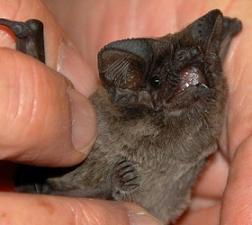African wind power developers are eager to get the turbines turning, but wildlife advocates say wait: first consider the threat to winged creatures.
At the 4th Wind Power Africa Conference and Renewable Energy Exhibition in Cape Town this week, wildlife advocates assured developers that they too are all for renewable energy.
Megan Diamond, Manager of the Wildlife and Energy Programme at the Endangered Wildlife Trust (EWT), pointed out that, in addition to reducing carbon emissions, wind power has several benefits for the environment and wild animals, compared to conventional energy propagation:
“It uses less space, less water, produces almost no pollutants and involves no mining,” said Diamond.
Are wind turbines bird-o-matics?
Nonetheless, wind farms have a bad reputation as “bird-o-matics” that suck birds in and spew them out grievously hurt – a point that critics of this form of renewable energy like to stress to turn popular opinion against it.
How was this reputation gained and is it a fair one? Importantly for Africa's fledgling wind power industry, does it apply to local scenarios and our endangered bird species?
Research on the local impact of wind turbines is, like the industry itself, in the very early stages, said Diamond, and currently there is considerable reliance on overseas experience of the issue.
Wind power's “bad rep”, said Diamond, stems chiefly from the case of the Altamont Pass Wind Farm in California, USA, where thousands of raptors, including the iconic golden eagle, have been lost to turbine blades.(1)
Another notorious example is that of Eurasian griffons colliding with wind generators on Spain's Tarifa wind farm.
Mapping bird sensitivity
It is not possible, said Diamond, to deduce mortality rates in Southern Africa from such examples, because the differences in bird species and behaviour are too great.
What is concerning in the local context, however, is that South Africa has far more bird species, and more globally threatened species, than other countries where wind power has been developed to any significant extent.
Also problematic is that in cases such as Altamont Pass and Tarifa, the birds notably involved in collisions were those on fairly easily discernible migratory routes.
With South African birds, said Diamond, it's harder to focus on migratory routes as flight patterns tend to be much more dispersed:
“What's needed is to look at the daily movements of birds. The lesson we can learn from experience in other countries is the importance of where wind farms are sited.”
To this end, the Birds and Wind Energy Specialist Group, convened by EWT, has brought out best practice guidelines for wind power development with regards to birds, and an Avian Wind Farm Sensitivity Map.
The aim of the map is to indicate areas containing species believed to be sensitive to wind farm developments. For example, soaring birds, and predators that scan the ground for prey may be especially vulnerable to collisions.
Delicate winged mammals
Bats, too, are at risk. They also suffer direct collisions with turbine blades, but of greater concern is their vulnerability to barotrauma – internal damage caused by pressure differences inside and outside the body.
The air pressure changes caused by wind turbines have no harmful effect on birds, but higher rates of bat fatalites around wind farms are thought to be because bats' lungs are sensitive enough to rupture as a result of the pressure differential.
Stefanie Dippenaar, an environmental project manager at the Centre for Scientific and Industrial research (CSIR) who has conducted extensive field monitoring of bats, pointed out that these mammals may also be negatively affected by clearing of natural vegetation for the erection of wind turbines, thus reducing areas for foraging and roosting.
Much more research is needed into which local bat species would be most affected, especially as regards changes in flight behaviour when they migrate, said Dippenaar.
She added, however, that it's a good guess that high-flying, open-air foraging species like the endangered Egyptian free-tailed bat (Tadarida aegyptiaca), will be most likely to fly at the height of turbine blades.
The Egyptian free-tailed bat may be especially vulnerable to wind turbines. (University of Pretoria)
Developers need to consider aspects of a proposed wind farm site that could also be appealing to bats, said Dippenaar. Overhanging cliffs with caves, old mineshafts and dilapidated buildings are potential roosting areas, for example. River beds and night lights that attract insects are also likely to attract foraging bats.
Dippenaar said that bat monitoring at a proposed wind farm site should be conducted for around 12 months, concurrently with the general Environmental Impact Assessment (EIA), but that this is not adhered to in South Africa:
“Usually, by the time a bat EIA is called for, it's already been decided where the turbines will be and this can be extremely tricky to change at a later stage.”
Wildlife still wins with renewables
Wildlife advocates are adamant that these risks cannot be ignored, but there is general agreement among environmental assessors and wind farm developers that renewable energy projects are far less damaging to local fauna, and natural systems as a whole, than fossil-fuel based power stations and modes of transport.
In this vein, Hermann Oelsner, President of the African Wind Energy Association, and proponent of the Darling Wind Farm Project, conceded that, while the risk to wildlife was real,
“There has not been a single recorded bird death at the Darling wind farm, now in its fourth year. However, on the roads nearby I've seen cars run over many raptors when they come down to to feed on the road kill.”
– Olivia Rose-Innes, EnviroHealth Editor, Health24, May 2012
Notes:
(1) One important reason for the high avian mortality rate at Altamont has been the use of old-model, small-blade, rapidly-rotating turbines. These are now considered outdated, and are being replaced by larger, higher-elevated, slower-turning turbines shown to be more bird-friendly.
Read more:




 Publications
Publications
 Partners
Partners










